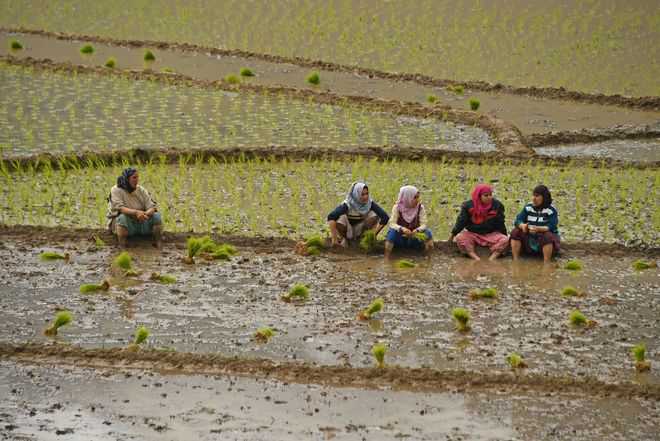Dinesh Manhotra
Tribune News Service
Jammu, September 27
The sown area under kharif crops has come down by nearly 15 per cent this year due to the deficit in rainfall in the Jammu province, comprising 10 districts.
Although the authorities are busy in compiling the exact report about the areas where crops have been damaged due to less rainfall, initial data has indicated that 15 to 20 per cent of the kharif crops were affected.
“It is a dangerous indication as not only a huge chunk of the cultivated area in the Kandi belts remained unsown, the paddy crop area in the plains has also shrunk by nearly 15 per cent due to the deficit,” Dr Vivek Arya, senior scientist at the Sher-e-Kashmir University of Agricultural Sciences (SKUAS) and an expert in climate change told The Tribune.
The main kharif crops of the Jammu region are paddy, maize, pulses, vegetables and fodder, covering 78 per cent of the net sown area (NSA). As per an official document, maize is grown in 3.19 lakh hectares, followed by paddy in 2.58 lakh hectares and pulses in 0.30 lakh hectares.
Pulses are mostly grown in the Kandi belts of Jammu, Samba, Kathua, Reasi, Udhampur, Rajouri and Poonch. As far as paddy is concerned, it is sown mainly in plains.
“Sixty to 65 per cent of the agricultural area in the Jammu province is rain-fed due to the non-availability of assured irrigation,” Arya pointed out, adding, “keeping in view the continuous rain deficit during the past five years, coping up with this situation is a big challenge before the authorities”.
“This year’s rain deficit would have consequences for rabi crops due to moisture deficit in the coming months.”
Dr Mohinder Singh, scientist at the SKUAST, said rainfall was sufficient at the time of sowing, but there was deficit during the potential growth period of kharif crops. “Rain deficit at the time of growth period has affected the paddy crop,” he said and added that other kharif crops in most parts of the Jammu province were affected.
Unlock Exclusive Insights with The Tribune Premium
Take your experience further with Premium access.
Thought-provoking Opinions, Expert Analysis, In-depth Insights and other Member Only Benefits
Already a Member? Sign In Now










